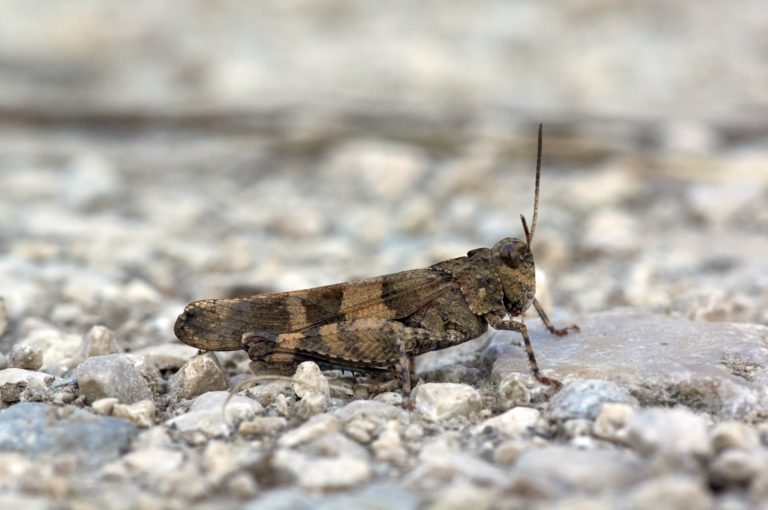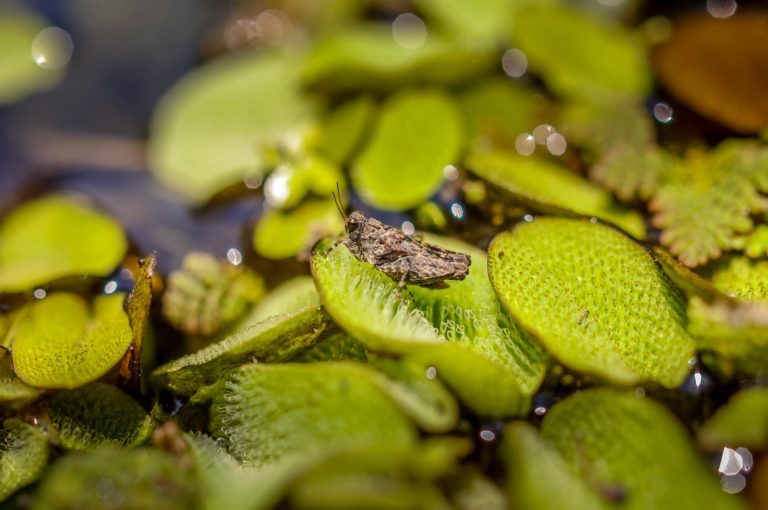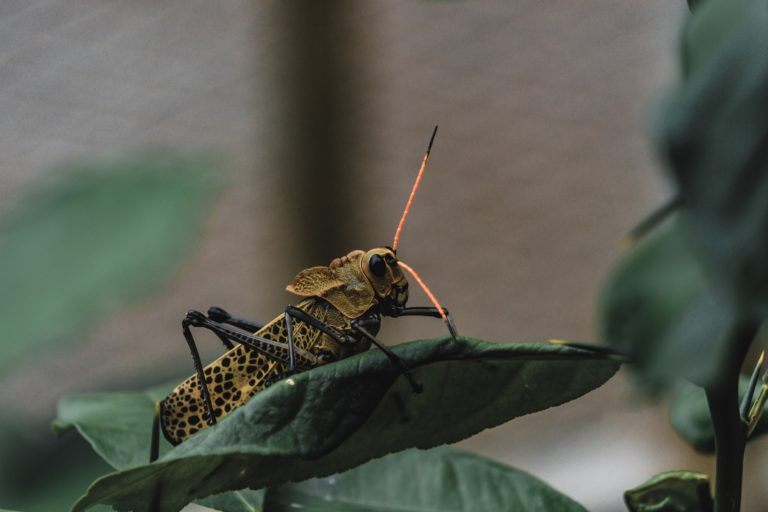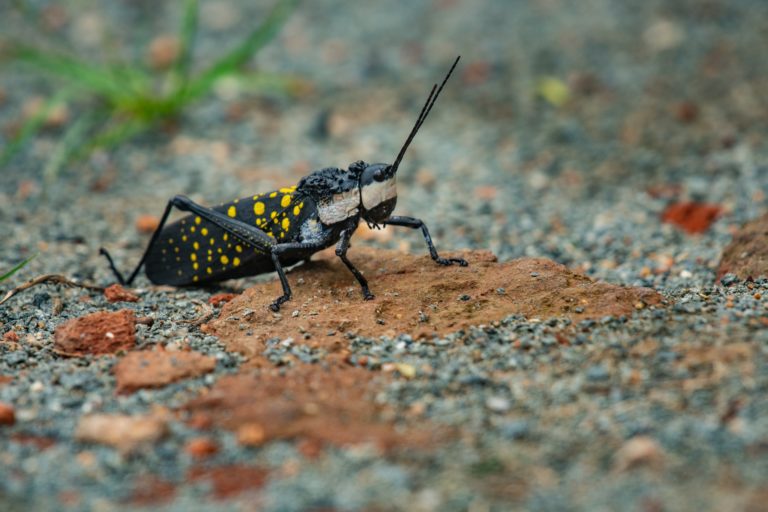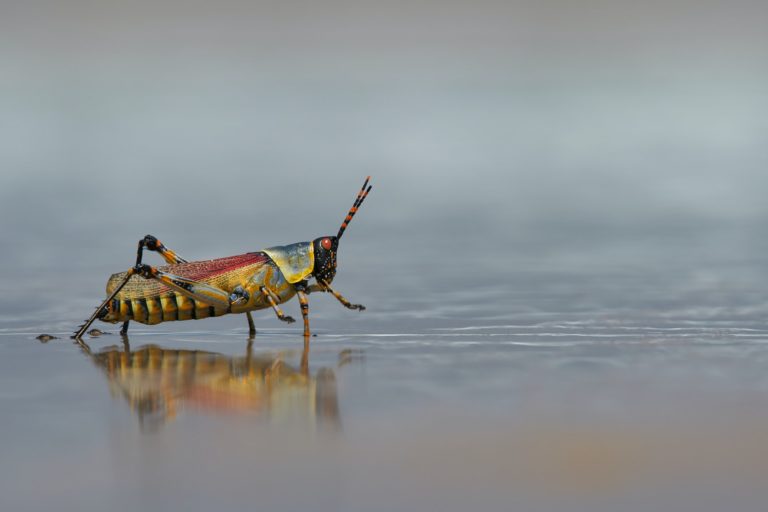Grasshoppers
As an important component of the ecosystem, grasshoppers may yet save the world… if they don’t destroy it first.
Time to Evolve
Few people realize that grasshoppers have been around since the early Triassic, about 250 million years ago, and hopped right alongside the dinosaurs. All this time to evolve means the grasshopper is a fine-tuned machine made primarily for two things: to eat, and be eaten.
Another side effect of being around for such a long time means that grasshoppers have evolved to have an amazing diversity of body shapes, sizes, colors, and patterns. Many people thing of hoppers as being drab brown or grey, but many are brightly colored (and even poisonous). The amazing world of grasshoppers is an easy rabbit hole to fall down.
Masters of eating, and being eaten
Megafauna like gazelle, bison, and zebra get all the fuss, but grasshoppers are extremely important grazers in grasslands across the world. What they lack in body size, they make up for in sheer numbers. Grasshoppers can also be very picky eaters. This is helpful to other grazers since the grasshoppers often will eat less tasty plants that large herbivores avoid. By working together, it has been found that this mix of grazers increases the amount of different plants in a grassland, as well as benefits all the grazers involved.
Especially where livestock are concerned, this delicate balance is important. Most livestock select only the tastiest plants to eat which can lead to those plants become rare on the landscape. A healthy insect community is extremely important to a healthy grassland and is just another reason why landscape-wide approaches to conservation are necessary. You can’t just protect or introduce large grazers. You have to look at every piece of the picture.
Now if everyone could love the little things in life (like grasshopper) half as much as Francis Stella the world would be a better place.
Grasshoppers are also really good at being eaten. Many, many, animals eat them including birds, mammals, and other insects. While many animals eat grasshoppers year round there are also some that eat them only occasionally. For example, coyotes will supplement their diet in the fall with delicious grasshopper treats when the insects are most numerous. Turns out, grasshoppers are super rich in protein as well as fiber, calcium, and many different vitamins. They actually have more protein per pound than fish, chicken, pork, or beef and this is actually true for many insects.
And it’s not just wild animals that eat grasshoppers, but humans too! They can be quite delicious when prepared, and not only do insects provide many health benefits, but they are much cleaner and energy efficient to raise than traditional livestock. Raising insects uses far less space, water, and food. The United Nation’s free online PDF book called Edible Insects is a great resource to learn more.
All this to say that entomophagy (eating of insects) just may save the world. If you haven’t tried it yet, do it for the planet!
What is a locust, exactly?
While there are about 10,000 species of grasshoppers in the world today, only about 20 of those are also considered locusts. And no, cicadas are not locusts despite what some regional dialects might have you believe. Locusts are a special group of grasshoppers that when conditions are right have the ability to create massive swarms. When locust populations are booming in numbers, they end up rubbing up against each other and their brains produce an abundance of the happy chemical, serotonin.
This increase in crowding conditions plus floods of serotonin leads to the grasshoppers breeding more. Their young will not only act differently, but also be built differently as well. Grasshoppers born as locusts will mature faster, have larger brains, higher endurance, and often will be very brightly colored. As the populations grow, the locusts are forced to start to travel to find food with some species travelling as much as 300 miles in a day.
Too much, too fast: plagues
A single locust in a swarm can eat it’s body weight in food each and every day. And while two ounces of food doesn’t seem like a lot, multiply that by 80 million locusts and one swarm can eat 35,000 people’s worth of food in a day. The locusts eat everything in their path: crops, trees, bed sheets, clothes, and by some accounts even the wool off a sheep’s back. There have been historical plagues such as the 1874 plague that swept across the Great Plains in the United States but more recent plagues are still in effect.
Amid the 2020 global pandemic millions and millions of grasshoppers swept across Africa, decimating the food sources that so many people rely on. The locust plague was made worse by the interruption of supply chains leaving people without the tools to combat the intruders.
Text alone doesn’t do the immensity of locust plagues justice.
Climate Change Indicators
While locust swarms are common across Africa and the world, the recent numbers are worse than ever. Many scientists believe that climate change plays a large role in the increase in swarm numbers. As droughts push the grasshoppers together they then explode in numbers under this crowding and swarm across the landscape. Some startup organizations are combating these swarms by turning them into animal feed. And as great of a solution that is, the real answer here is combating climate change. These unassuming little animals are an often overlooked side-effect to our Earth’s plight, but for many, the threat is very real and impossible to ignore. As droughts, fires, and locust plagues grow worse, it may just become your problem too.
Grasshoppers have the ability to save the world, or destroy it. Which will it be?
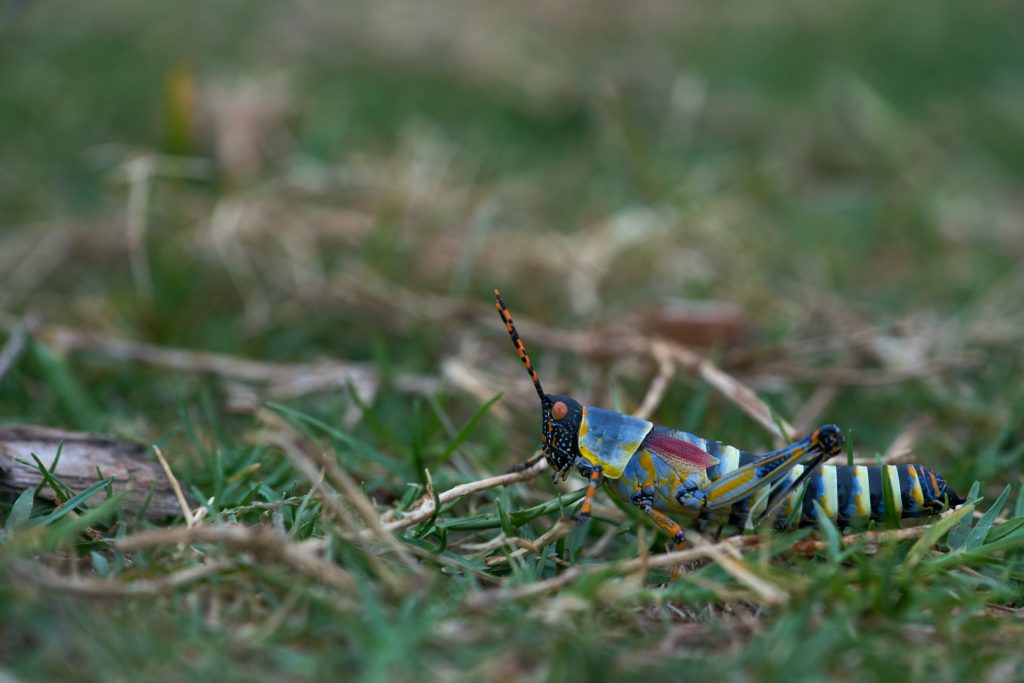
Sources/Further Reading:
- Zhong, Z. 2014. Positive interactions between large herbivores and grasshoppers, and their consequences for grassland plant diversity. Ecology.
- Lyons, C. 1874: The Year of the Locust. HistoryNet.
- Huis, A., Itterbeeck, J., et al. 2013. Edible Insects: Future prospects for food and feed security. Food and Agriculture Organization of the United Nations. PDF.
- Njagi, D. 2020. The Biblical locust plagues of 2020. BBC.
- Locusts. National Geographic Society.
Did you spot an error or have questions about this post? Email Nicole Brown.

